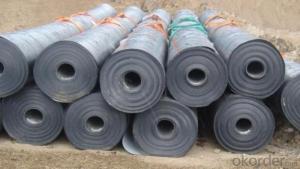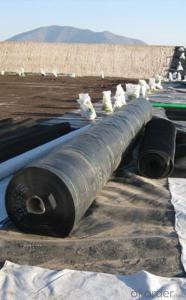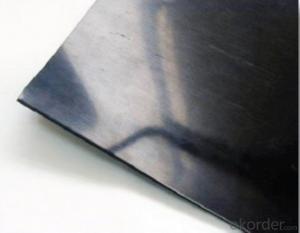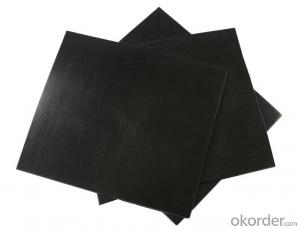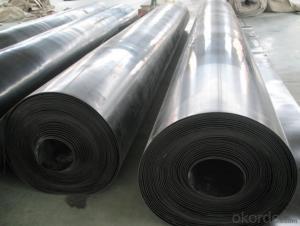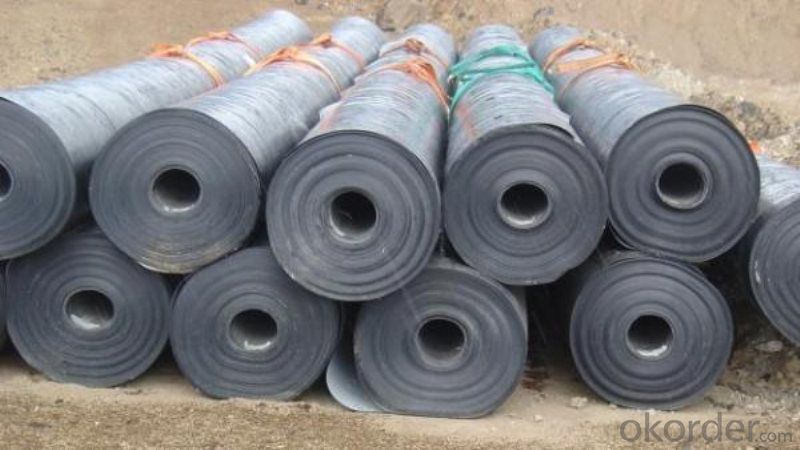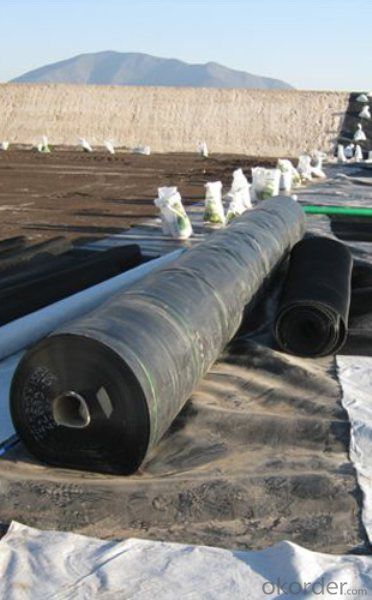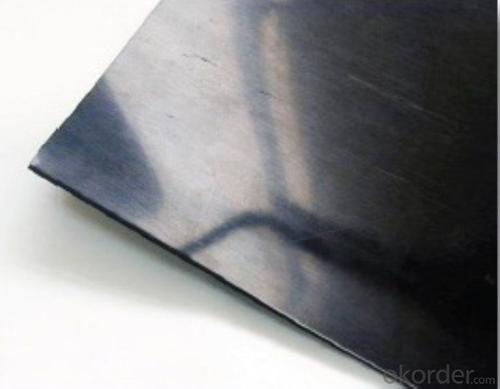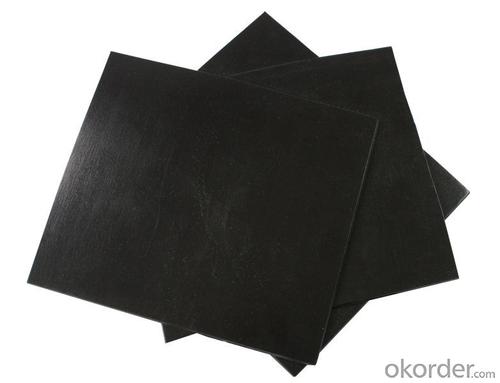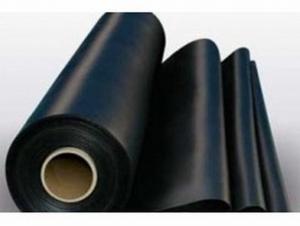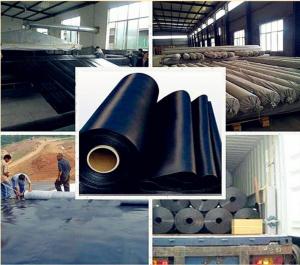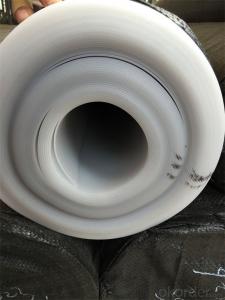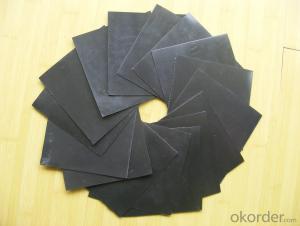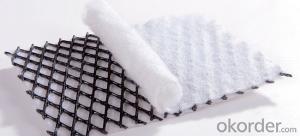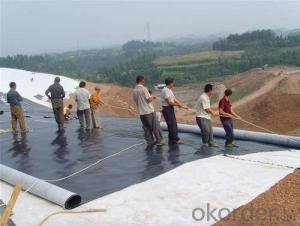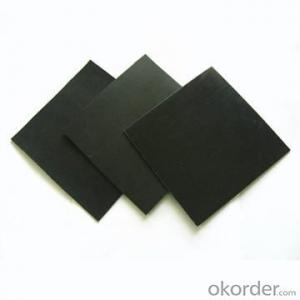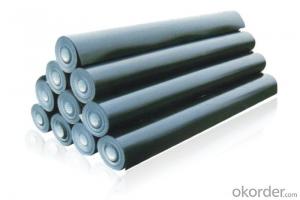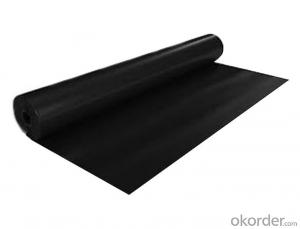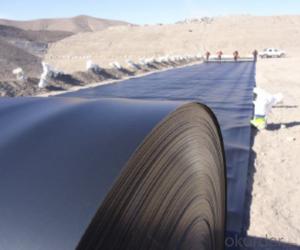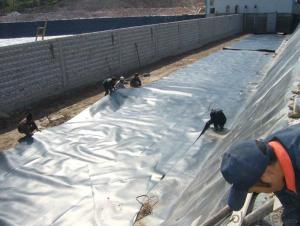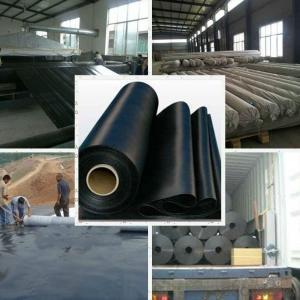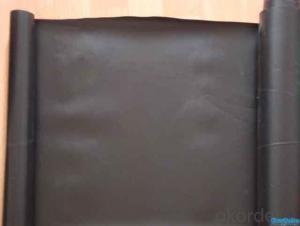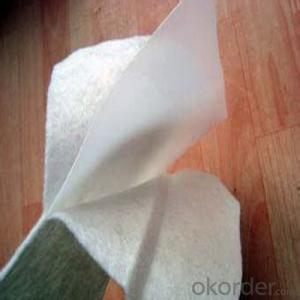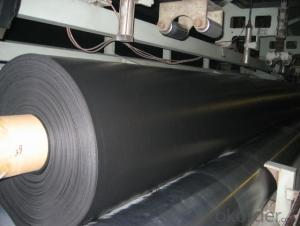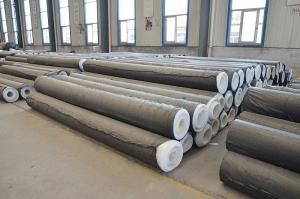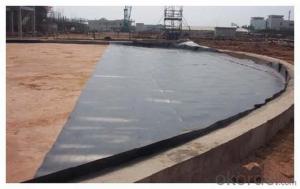Geomembrana Peru 0.75mm New LDPE Made in China
- Loading Port:
- Qingdao
- Payment Terms:
- TT OR LC
- Min Order Qty:
- 14500 m²
- Supply Capability:
- 100000 m²/month
OKorder Service Pledge
OKorder Financial Service
You Might Also Like
Geomembrana 0.75 of New LDPE Made in China
Description Of Geomembrana 0.75 of New LDPE Made in China
Geomembrane is a plastic Film Raincoat. Currently, the main raw materials of Waterproof Geomembrane are mainly Plastic polyvinyl chloride (PVC) and polyethylene (PE), Eva (ethylene / vinyl acetate Copolymer), also designed for Special use in applications of Tunnel (ECB Ethylene vinyl acetate Modified Asphalt mixture Geomembrane).
Main Features of Geomembrana 0.75 of New LDPE Made in China
molecular structure, Polyethylene (PE) geomembrane is divided into low-density polyethylene (LDPE) geomembrane, linear low density polyethylene (LLDPE) geomembrane, high-density polyethylene (HDPE) geomembrane;Aside from colorless and transparent raw material, you can made it into the black, green, blue, yellow, etc by adding different color masterbatch., also made into geomembrane with the black front and the blue back or other 2 different colors as required by customers.
Applications of Geomembrana 0.75 of New LDPE Made in China
1.LDPE geomembrane is applicable to hydraulic engineering: such as seepage control, plugging, reinforcement for rivers, lakes and reservoirs and dams, drainage seepage control, vertical core wall, slope protection, etc.
2. LDPE geomembrane's applications in municipal engineering: subway, underground works of the building, planting roof, roof garden, sewage pipe seepage control;
IMages of Geomembrana 0.75 of New LDPE Made in China
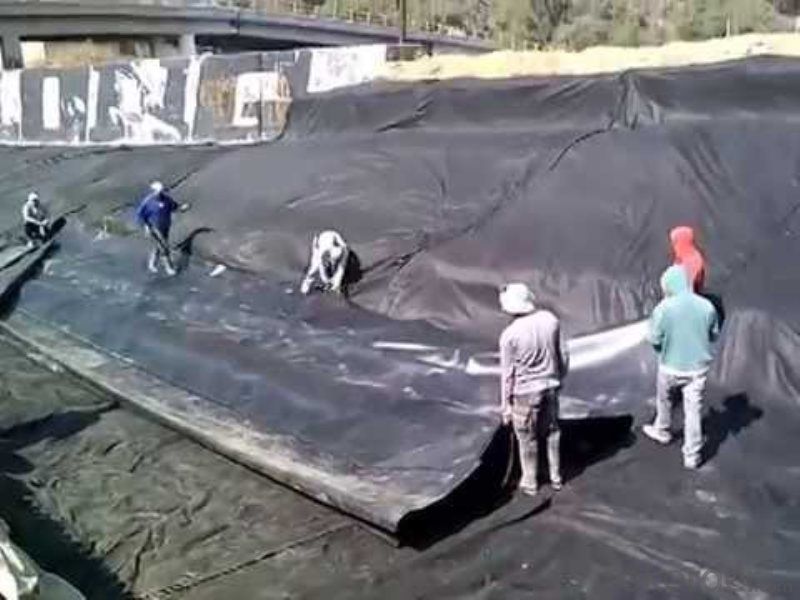
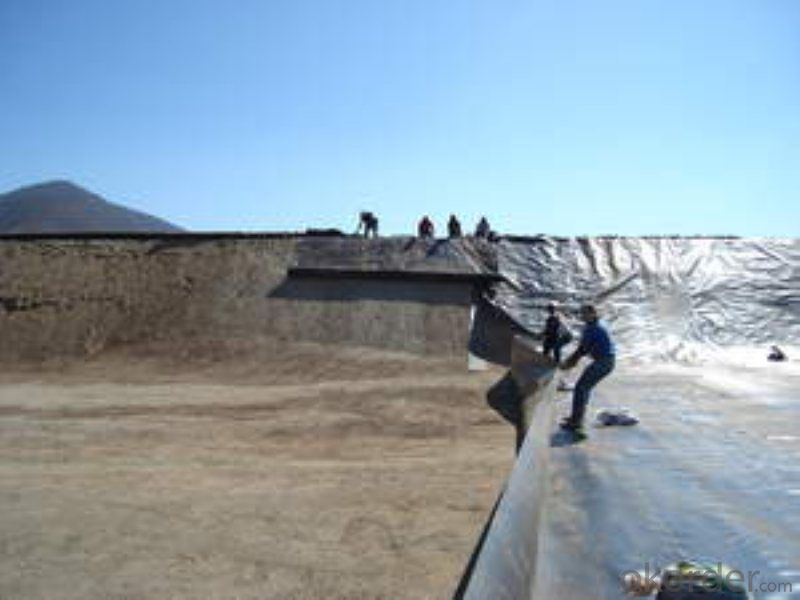
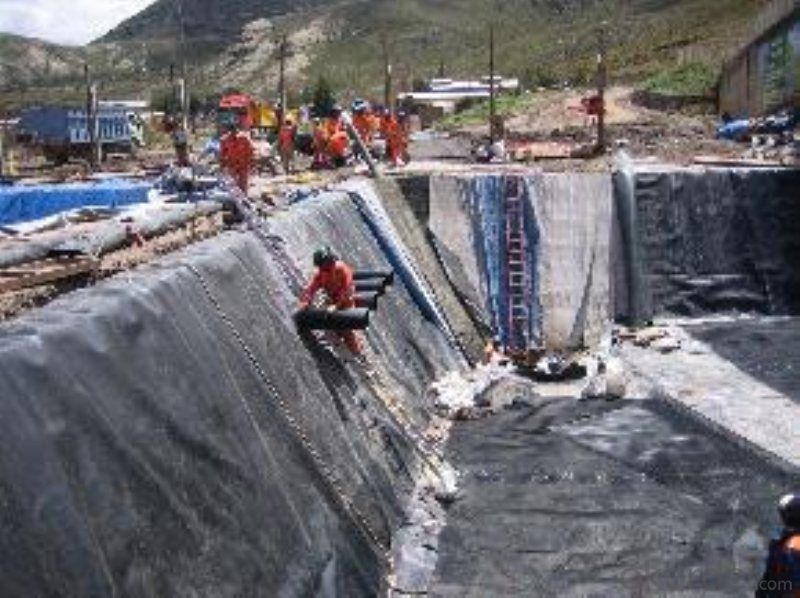
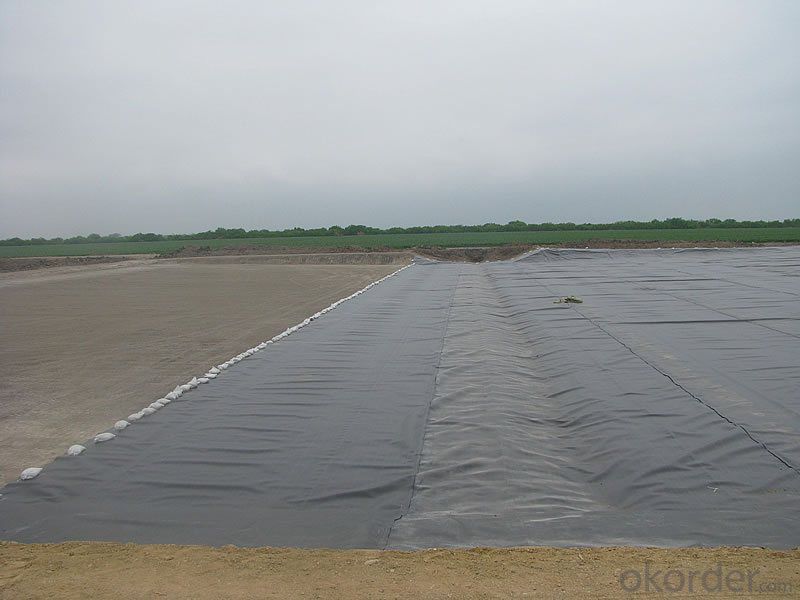
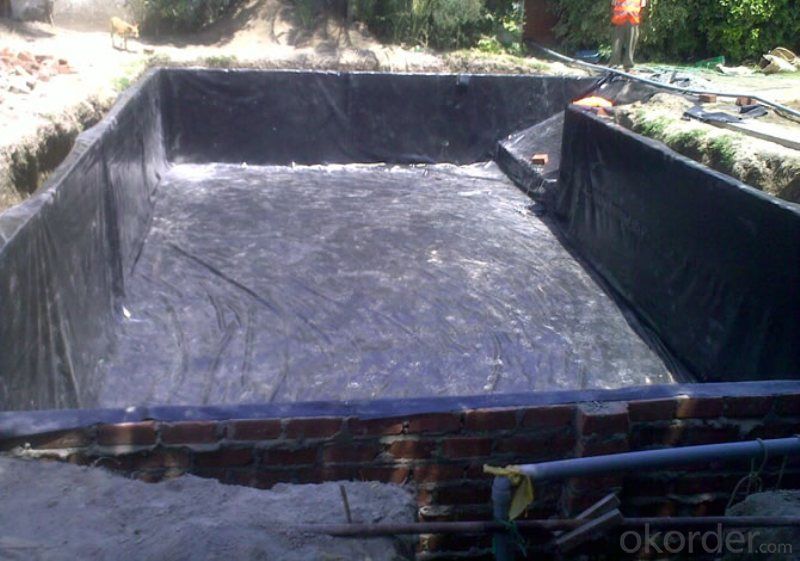
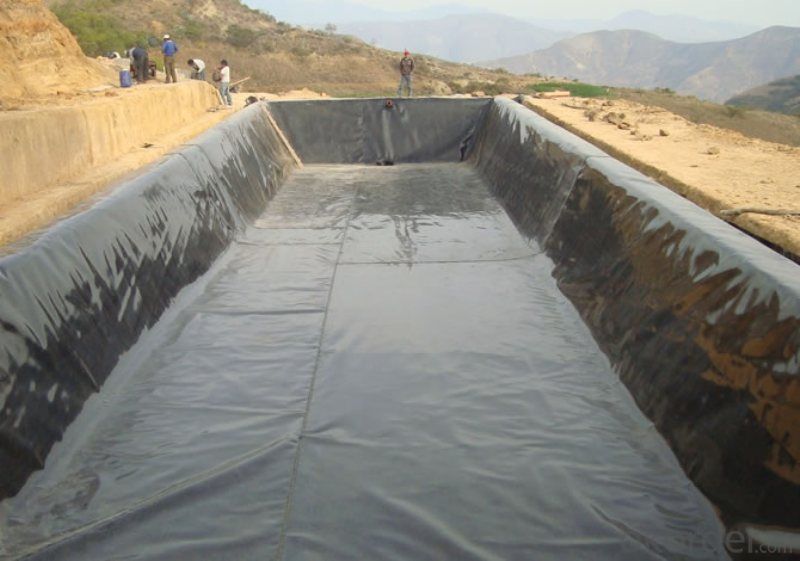
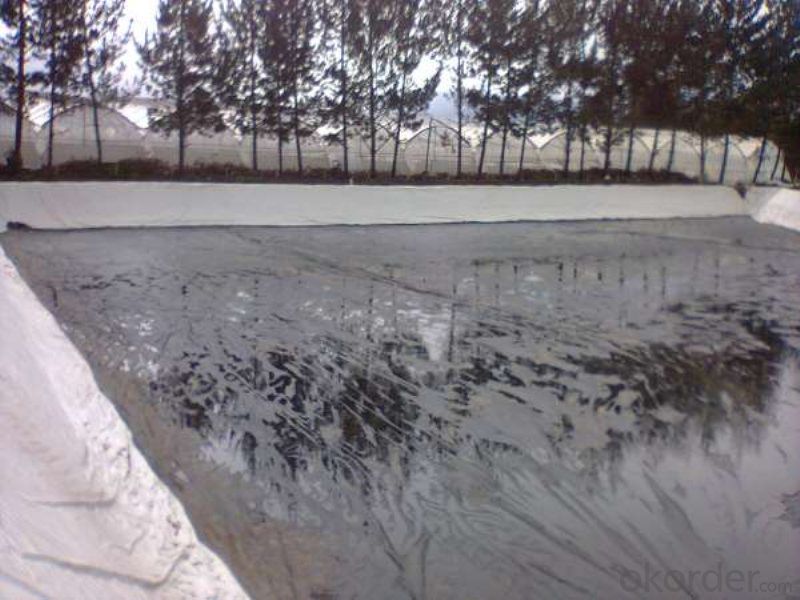
FAQ:
1. What are we supplying?
We are specialized in producing .geotextile , geocell, geogrid, geomembrane
2. How Many years experience do we have?
We have been exported to more than 15 countries in the past 10 years.
3. How long do we usually reply your request?
We always reply our customer within 12 hours.
- Q: Are geomembranes resistant to erosion by waves and currents?
- Yes, geomembranes are generally resistant to erosion by waves and currents. These synthetic materials have a high tensile strength and are designed to withstand various environmental conditions, including the forces exerted by waves and currents. However, the specific resistance may vary depending on the type and quality of the geomembrane used, as well as the intensity and duration of the waves and currents it is exposed to.
- Q: How much does the electrothermal?film floor heating cost?
- Electrothermal membrane floor heating is calculated by 120 watts / square meter and 8 hours a day, the electricity of a day is around 1kwh. In fact, it will be more energy-efficient in the actual use, as long as it achieves the state regulations of energy efficiency standards, indoor insulation effect will be better, the power consumption will be greatly reduced. Secondly, it can also achieve energy-saving behavior in the use of the process, such as travel time is more than three days, the electric floor heating system can remain in the state of low temperature operation, and also can used in the rooms where no people live in it, electricity consumption will be greatly reduced. Another electrical floor heating can make full use of peak valley electricity policy, peak valley electricity of the city is respectively: Peak power 8: 00-21: 00, the price is 0.5583 yuan / kwh; valley power is 21: 00-8: 00, electricity price is 0.3583 yuan / kwh we can adjust peak power higher at night in the use of electric floor heating, it can be 18 kwh, and we can adjust the temperature lower during the day, it can be 10 to 12 kwh. The concrete can be fully utilized at night time to heat storage, and be released the heat during the day. The laying of electric heating film needs a very good design, it should meet the requirements of users on the temperature in accordance with the different requirements of the use of space to lay the corresponding power of the electric heating film.
- Q: What are the challenges of installing geomembranes in remote locations?
- One of the main challenges of installing geomembranes in remote locations is the logistical difficulty. Transporting heavy machinery, materials, and equipment to these areas can be costly and time-consuming. Additionally, the lack of infrastructure and limited accessibility in remote locations can pose challenges in terms of setting up the necessary equipment and ensuring a smooth installation process. The availability of skilled labor and technical expertise may also be limited, making it harder to find qualified professionals to carry out the installation. Finally, remote locations often have harsh weather conditions, such as extreme temperatures or heavy rainfall, which can further complicate the installation process and require additional precautions to ensure the geomembranes are properly installed and maintained.
- Q: How to install the electrothermal?film non-woven fabrics?
- After taking ground insulation measures, then clean the ground so as to keep it smooth and flat. Then lay the aluminum foil reflective film, and then pave the electrothermal?film. The electrothermal?film should be face up, and a safe distance between films of around 20 cm is recommended to reserve.
- Q: Can geomembranes be used in floating solar panel installations?
- Yes, geomembranes can be used in floating solar panel installations. Geomembranes are impermeable liners that can be used to create a floating platform on water bodies, providing a stable foundation for solar panel installations.
- Q: Are geomembranes environmentally friendly?
- Yes, geomembranes can be considered environmentally friendly. They are designed to prevent seepage of liquids or gases, thus protecting the surrounding environment. Geomembranes can be made from sustainable materials and help in the containment and management of hazardous waste, preventing pollution and protecting ecosystems. However, the environmental impact of geomembranes also depends on their disposal and end-of-life management. Proper disposal practices and recycling options should be followed to ensure their overall environmental friendliness.
- Q: What is made of stretch film?
- Composite stretch film is currently the most widely used and largely consumed, occupying more than 40%of the overall consumption of plastic packaging stretch film. Since polyethylene containing no polar group has high crystallinity and low surface free energy, so surface treatment is required before printing and composite. Low density polyethylene stretch film is translucent, shiny, soft. It has excellent chemical stability, heat sealability, water resistance and moisture resistance, freeze-resistant and it can be boiled. Generally low density polyethylene stretch film is made by blow molding and curtain coating. polyethylene stretch film made by curtain coating is of uniform thickness, but is rarely used because of high prices. Blow-molded polyethylene stretch film is made by PE particles blown from the blow molding machine. It is most widely used for its low cost. Stretched polyester film is using polyethylene terephthalate as raw material, It is colorless, transparent, glossy stretch film, excellent mechanical properties, high stiffness, hardness and toughness, puncture resistance, abrasion resistance, high temperature and low temperature resistance. It has good chemical resistance, oil resistance, air tightness and fragrance holding. it is one of film substrate of the commom composite stretch film that is permeability resistance. But polyester stretch film price is higher, generally having a thickness of 12μm, often used for outer materials of cooking and packaging. it prints well.
- Q: Can geomembranes be used in reservoir liners?
- Yes, geomembranes can be used in reservoir liners. They are commonly employed to provide impermeable barriers that prevent water seepage and ensure the integrity of reservoirs.
- Q: Can geomembranes be used in sewage treatment plants?
- Yes, geomembranes can be used in sewage treatment plants. They are often employed as liners for containment ponds, lagoons, and wastewater treatment basins to prevent leakage and protect the surrounding environment from contamination. Geomembranes offer excellent chemical resistance, durability, and impermeability, making them suitable for various applications within sewage treatment plants.
- Q: What are the considerations for geomembrane selection in mining tailings storage?
- When selecting a geomembrane for mining tailings storage, various considerations must be taken into account. These include the chemical compatibility of the geomembrane with the tailings, its durability and resistance to punctures, tears, and UV degradation, as well as its ability to withstand the weight and pressure exerted by the stored tailings. The geomembrane's installation and maintenance requirements, as well as its cost-effectiveness, should also be considered. Additionally, factors such as environmental regulations and the potential for seepage or leakage should be evaluated to ensure the chosen geomembrane meets the specific needs and challenges of the mining tailings storage application.
Send your message to us
Geomembrana Peru 0.75mm New LDPE Made in China
- Loading Port:
- Qingdao
- Payment Terms:
- TT OR LC
- Min Order Qty:
- 14500 m²
- Supply Capability:
- 100000 m²/month
OKorder Service Pledge
OKorder Financial Service
Similar products
Hot products
Hot Searches
Related keywords
